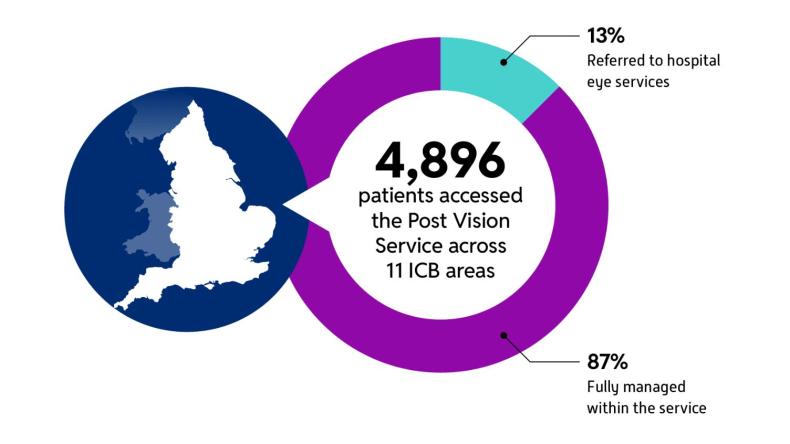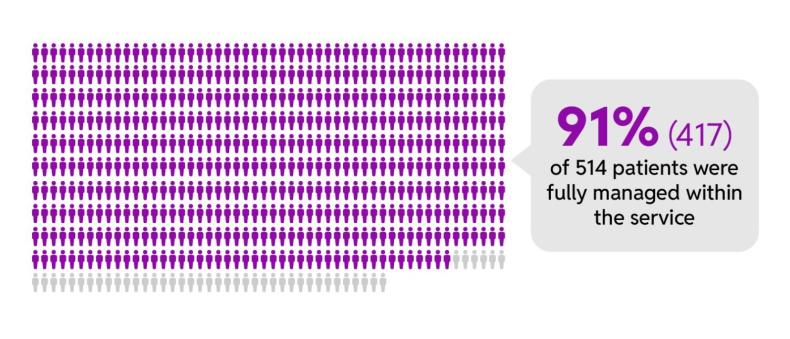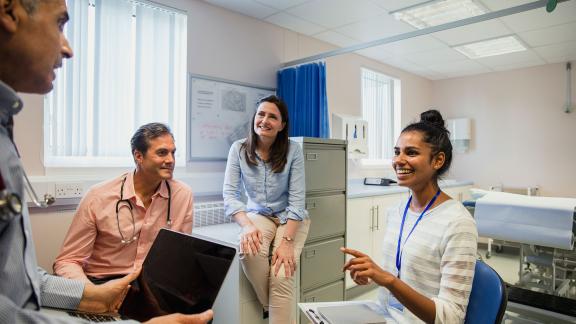The Post Vision Screening (PVS) Service

Overview
The Post Vision Screening (PVS) Service is a vital component of Primary Eyecare Services’ children’s pathways. It provides enhanced eye examinations for children identified during school vision screenings as not meeting expected visual standards.
By offering accurate diagnosis and timely treatment within community optometry practices, the service reduces unnecessary hospital referrals and improves access to care closer to home. This services approach ensures we are enhancing children's learning capabilities through improved vision, enabling them to thrive academically and socially.
What the organisations faced
School vision screening programmes identify thousands of children each year with potential vision issues. Historically, many of these children were referred directly to hospital eye services, which created long waiting lists and delays in treatment.
Families often faced significant travel burdens and extended waiting times for routine care that could have been managed effectively in the community, while delays in treatment meant that children potentially faced poorer outcomes both in and outside of school.
This situation highlighted the need for a more efficient and accessible pathway to ensure early intervention and better outcomes for children.
What was done
To address these challenges, Primary Eyecare Services introduced the Post Vision Screening Service across multiple Integrated Care Board (ICB) areas. Accredited optometry practices were commissioned to deliver enhanced eye examinations, including cycloplegic refraction and prescribe spectacles were appropriate.
The service is supported by digital platforms, which enable secure referral management and reporting, ensuring smooth communication between screening teams and practices.
Local commissioning allowed the service to be tailored to the needs of each area, while safeguarding standards were upheld by requiring all practitioners to comply with Level 2 safeguarding requirements for children.
Engagement with schools, screening teams and Local Optical Committees (LOCs) ensured awareness and uptake of the service. By embedding this service within community settings, children receive timely care that prevents vision-related barriers to learning, reinforcing the link between good eyesight and educational success.
Outcomes
Nationally, in 2024/25, 4,896 patients accessed the service across 11 ICB areas. Of these, 87% were fully managed within the service, avoiding the need for onward referral to hospital eye services. This demonstrates the effectiveness of community-based care in reducing hospital pressure and improving access for families. Crucially, these outcomes mean children can return to school with improved vision, supporting concentration, confidence and overall learning capabilities.

Croydon
In Croydon, within the South West London ICB, 514 patients access the service following referral from the Croydon Vision Screening team. Of these, 471 patients, over 91% were fully managed within the service after cycloplegic refraction and spectacle prescription where applicable. This local success story highlights how the service can deliver outstanding results when integrated effectively with screening programmes.

County Durham
Similarly, in County Durham, 272 patients accessed the service following referral from the screening team. Of these, 239 or 88% of patients were fully managed within the service, while only 33 required onward referral to hospital eye services. This demonstrates that even in areas with higher complexity, the majority of cases can still be resolved within community settings.

Conclusion
The Post Vision Screening Service has reduced pressure on hospital eye services by managing thousands of referrals in community practices. It has improved access by enabling children to receive timely care locally, reducing travel and waiting times for families. The high percentage of cases resolved without hospital intervention reflects positive outcomes for patients and supports NHS priorities for integrated care models. Most importantly, by prioritising early intervention and improved vision, the service strengthens children’s ability to learn and achieve their full potential, demonstrating the better eyesight is the foundation for better education.
Further information
For more detail on this improvement insight, contact Primary Eyecare Services.
Also take a look at our new programme to support teams to understand, plan and create the infrastructure and processes needed to move ophthalmology services into the community.



